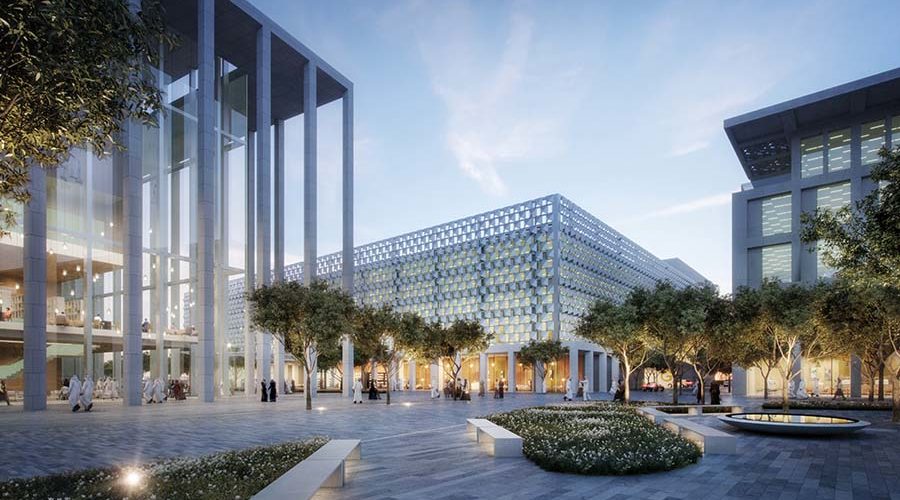Developing healthcare estates requires a huge amount of collaboration between the many organisations and individuals that bring projects to life. Gavin Thompson, Partner and former CEO of UK-headquartered global engineering consultancy Buro Happold, explains how the business has adopted digital innovation to transform how organisations work together to create a clear approach to building facilities.
Buro Happold
I don’t know about you, but it’s become second nature for me to turn to an app or website when I need to know or do something. Whether it’s shopping, booking a holiday or buying a car, almost everything can be done digitally. It’s often quicker and more convenient and this has completely changed the way we live and work – and the COVID-19 pandemic has only cemented this.
In the built environment and healthcare, software is transforming how buildings work too. Improved data capture, automation and AI and smart products allow us to create buildings that more actively help deliver care and support staff. In the UK, NHSX has been established to drive this digitisation in public sector healthcare to rethink how people receive care and treatment.
But harnessing this technology isn’t just limited to engineering and the products used in buildings. There’s also an exciting opportunity to improve how healthcare professionals and myriad consultants involved in the sector collect, share and update the critical information used to plan, design and build modern facilities.
Often, organised volumes of files are used to bring together the strategies, masterplans and guidelines that planners, architects and designers need to create new facilities for a client.
If a process like this is used for a project, the information is brought together into collections of PDFs that are not easy to navigate or add to. There may also be conflicting standards, particularly in countries that draw on different international design standards, and these need to be reconciled so consultants and clinicians are clear on which to follow, and the approach healthcare providers want to take.
Importantly, a ‘knowledge hub’ like this is only useful if its information is current and regularly updated. It has to evolve and capture changing guidance and new ideas, or it won’t instil confidence that the process is offering accurate information or driving continual improvement. This is tricky to achieve efficiently with basic files and folder structures, where volumes of documents are hard to update and are disconnected from one another.
The concept of a central repository for all information and development standards for a healthcare provider is, of course, a solid one, but we’ve been challenging ourselves at Buro Happold to think about how to maximise efficiencies and we’ve looked to software for the solution.
A new digital solution for Hamad Medical Corporation, Qatar
We’ve been working on a groundbreaking project in Qatar with Hamad Medical Corporation (HMC) to design and develop a new digital information hub, called the HMC Design Standards Framework (DSF).
HMC has brought together many expert clinicians and consultants from around the world to plan, design and build new hospitals and upgrade existing sites. With tens of thousands of employees across the organisation, it’s critical that HMC has a standardised, common approach to how facilities function to consistently operate a single model of care.
HMC challenged us to make this happen and we responded by developing new software around a framework of managing data, building from an existing website hosting PDFs, to catalogue the information needed to plan and design facilities – essentially, a single source of truth.
The DSF is holistic and includes everything from HMC’s national strategies and site masterplans to more detailed site information, such as how operating theatres should be configured, all set in an easy-to-navigate platform.
An enhanced framework, taking the next step
Importantly, what sets the DSF apart from other systems is a governance process that’s at the core of reconciling information and driving continual improvement. Within the software, users can highlight conflicts in information, and feedback suggested changes to the client, in this case HMC’s management team. Differing opinions can be discussed and resolved through the same governance process too. This creates an evolving system bespoke to a healthcare provider that keeps itself current.
The DSF is also easy to access and search. We want consultants to be able to move seamlessly through all information and learn from other disciplines. Using a navigation panel, content can be found in the software easily using a computer, tablet or smartphone. This saves time and allows users to see the route of information and where it comes from, as well as understand the reasoning behind it to make more informed decisions.
And, critically, this in turn unlocks more opportunity for innovation, which users are actively encouraged to think about. Ideas for improvements or changes can be marked within the system and, again, these are sent to the client for review and approval. This means learnings are captured as projects progress.
The programme really has been a game-changer for HMC. We’ve seen it deliver significant efficiencies and encourage collaboration among a disparate group of consultants and clinicians. By creating a common approach, we’ve saved time and cost and have also improved facility performance.
But the DSF is more than just about streamlining processes. It’s resulted in huge steps forward in the rate of continual improvement. We’re able to better capture the new ideas and experience of consultants working on projects. By deploying this latest thinking, HMC is able to deliver ever more cutting-edge facilities.
While this work has been born out of Buro Happold’s collaboration with HMC, the DSF can be used by any healthcare provider.
As we emerge from the COVID-19 pandemic, it’s important that we look for smarter ways to capture everything we’ve learnt about delivering care amid a global healthcare crisis. I believe systems like the DSF will play a key role in this, as well as improving how we collaborate more widely.










